A Visit to the Ancient Crocodile Temple of Kom Ombo
In this destination guide we will visit the ancient Egyptian temple of Kom Ombo, a common stop on a Nile cruise itinerary between Luxor and Aswan.
A visit to Kom Ombo
After a pleasant river cruise from Aswan, our ship arrived at its first stop of Kom Ombo at dusk.
The ancient temple at Kom Ombo (alternatively written as Kom Ombu or Kom Umbu) is usually the first port of call after departure from Aswan on a downstream river cruise.
Indeed, three other river boats had already beaten us there and were docked along the Kom Ombo wharf.


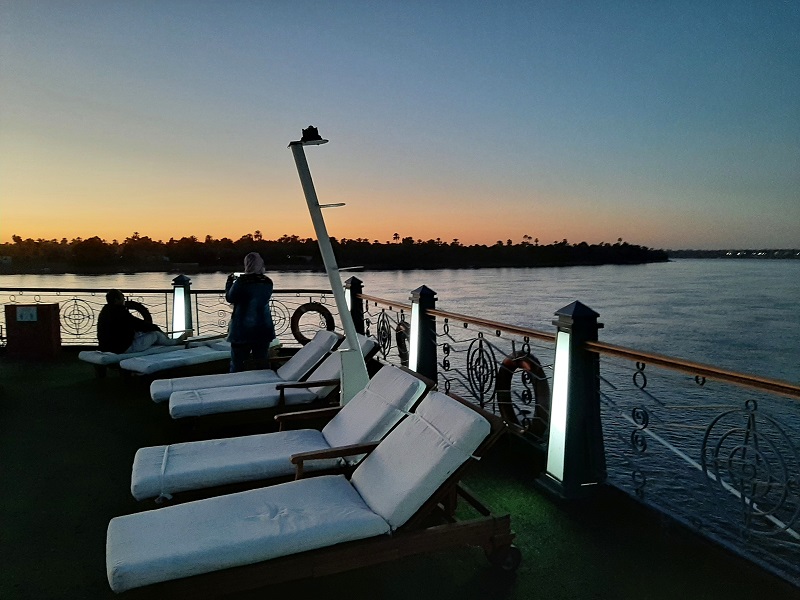
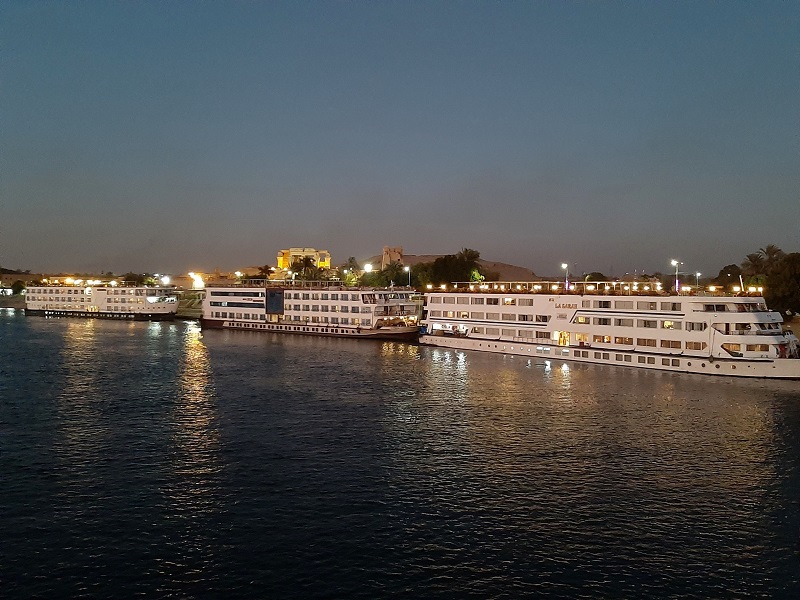
To the temple
The temple of Kom Ombo is located on a hill just above the riverbank and will only a short walk away from the disembarkation point of your cruise ship.
I met up with my guide Mohammed in the lobby of our river cruiser so we could immediately disembark the ship as soon as the gangway was put out.
Having a private guide again worked out in my favour during my visit to Kom Ombo.
While all other passengers on group tours were still assembling in the lobby or outside on the dock, we were already well on our way towards the temple.
As a result, we could enjoy the splendour of Kom Ombo away from the crowd and without other people walking in front of the fine details of the temple.
Kom Ombo is beautifully illuminated in the evening, making it a great time of the day to visit this ancient Egyptian temple.


Temple construction
The Temple of Kom Ombo was constructed around 180BC during the Ptolemaic Era and is dedicated to the crocodile god Sobek as well as to the falcon god Horus.
The temple is entirely symmetrical with the left side being devoted to Horus and the right side to Sobek.
Before you enter the temple it’s well-worth it to have a look at an interesting construction technique used in ancient Egypt.
To join two blocks of stone together, the Egyptians would cut a hole in both stones and insert a piece of wood.
As wood expands from moisture, the wooden joint would firmly hold the stone blocks together.
At Kom Ombo you can see how this was done was done as in front of the temple there is a large stone block with a clearly visible wooden stake in it.

Pillar
Before you enter the temple, make sure you also admire the pillars on the forecourt.
Although just like some other parts of the temple these pillars are damaged by earthquakes and the passage of time, some traces of their original colours still remain.

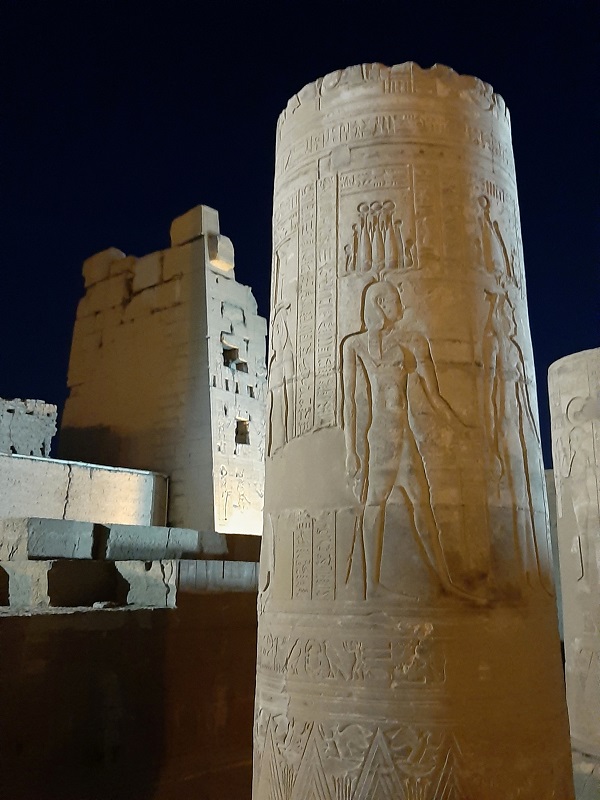
Inside the temple
As a temple from the Ptolemaic period, Kom Ombo has a similar layout as other temples from this era such as Philae which I’ve visited earlier this trip.
If you want to learn more about the everyday functioning of an ancient Egyptian temple you are well-advised to read my Philae guide.
The great Hypostyle hall at Kom Ombo – which acted as a colonnaded court for minor priests to worship the gods – is one of the most impressive parts of the temple.
Make sure you have a look upward as well to see the spectacular blue-coloured vultures symbolising Nekhbet and Wadjet painted on the ceiling.
I’ll talk more about their meaning a bit further down!


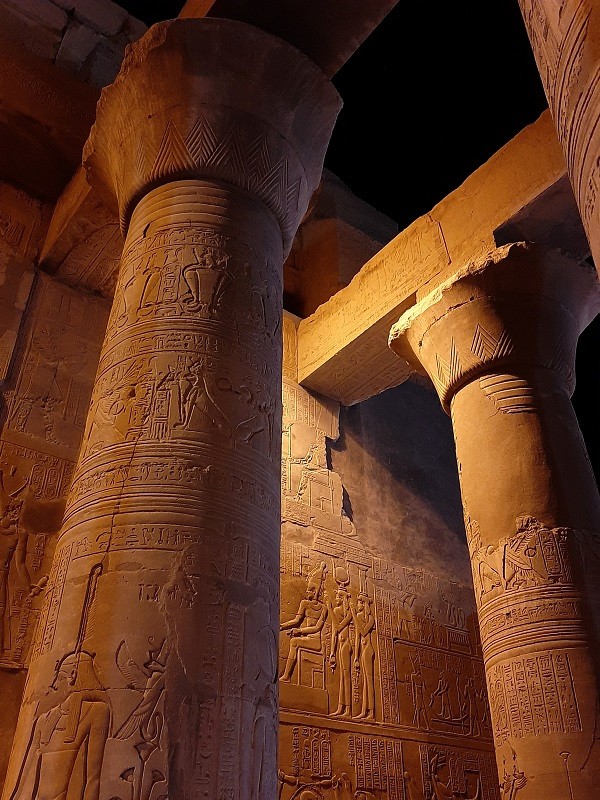
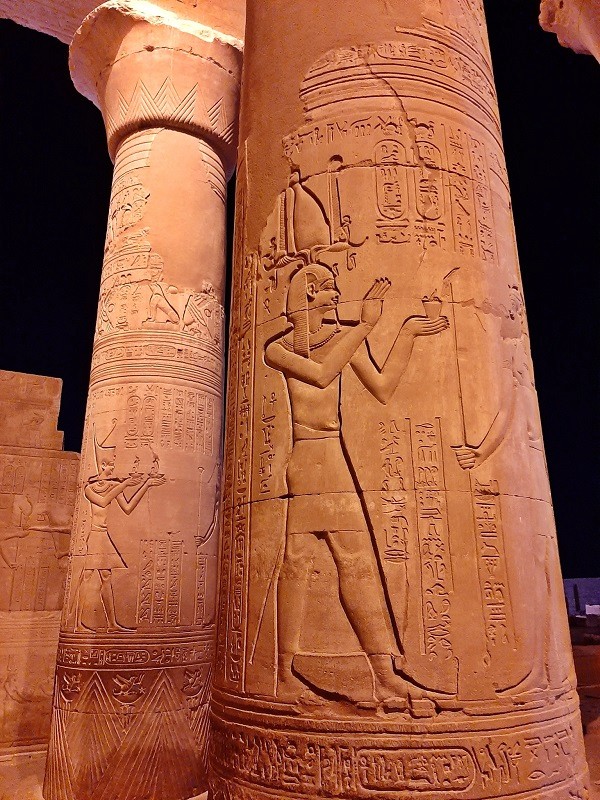

Reliefs
One advantage of exploring Kom Ombo with a professional guide is that you can learn more about the meaning and symbolism behind all the amazing reliefs.
I particularly liked the vivid reliefs showing the traditional Egyptian coronation ceremony of Pharaoh Ptolemy XII Neo Dionysos.
In one scene showing the first stage of the coronation, you can see Ptolemy in a purification ceremony standing between the gods Thoth and Horus.
Ptolemy is then presented the double crown of Lower and Upper Egypt by Nekhbet (the patron and protector of Upper Egypt) and Wadjet (the protector of Lower Egypt).
As you can see, the crown of Upper Egypt worn by Nekhbet and the crown of Lower Egypt worn by Wadjet are combined into a single crown for all of Egypt which is worn by Ptolemy.



Birthing chair
Another striking and highly interesting relief at Kom Ombo shows Isis giving birth to a baby on a birthing chair.
This birth chair or stool had a hole in the seat and was a common way to deliver babies in ancient Egypt.
It’s however not the relief of the woman on the birth chair that is interesting but the image right above it of a man sitting on a similar chair.
According to my guide Mohammed, it shows her husband supporting his wife and sharing the experience and pain of giving birth to her firstborn, a clear symbol of marital love and respect.
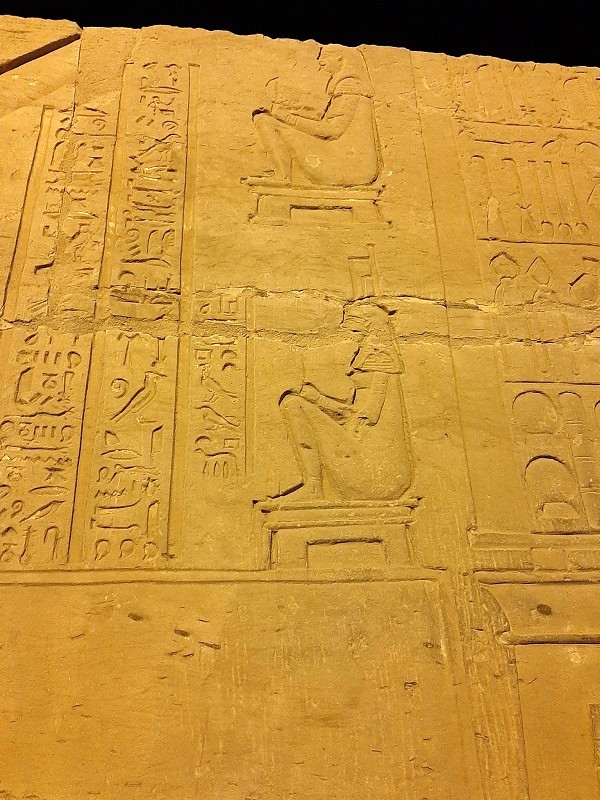
Sanctuary
Just like any other ancient Egyptian temple, the heart of Kom Ombo was the sanctuary where the High Priest of the temple worshipped the gods, using offerings and goods from the adjacent storage rooms.
Unfortunately, there isn’t much remaining of the sanctuary at Kom Ombo as the roof and walls have almost completely disintegrated over time.
However, the altar of Horus is one of the objects which is still visible.
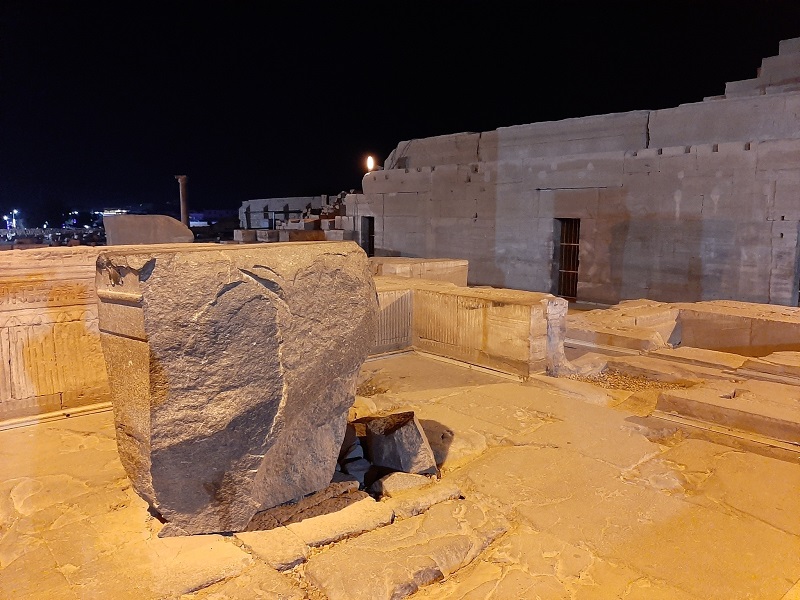
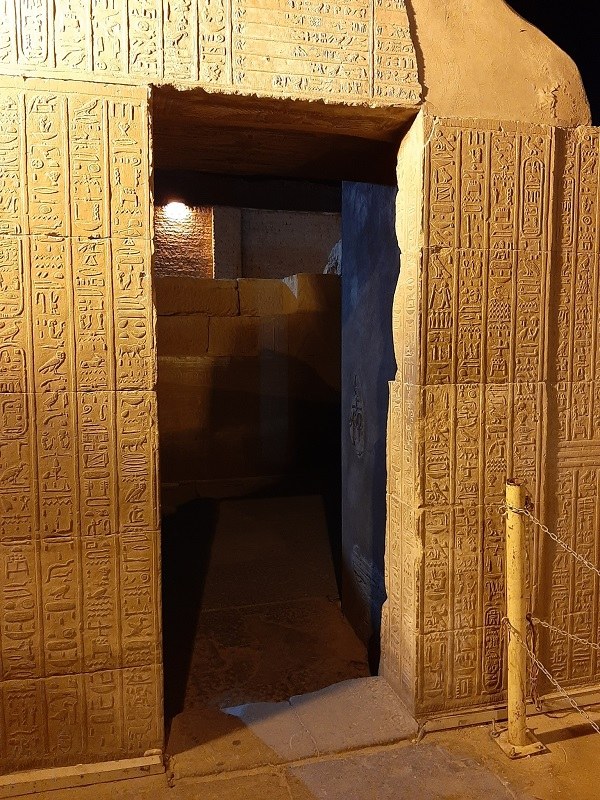
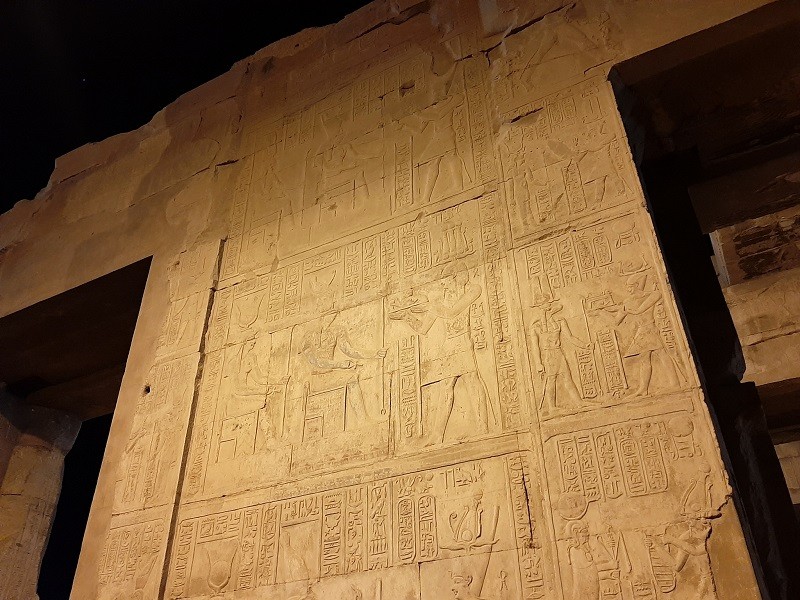
Nilometer
The temple of Kom Ombo also features a well in the north-western part of the complex.
This well doubled as a Nilometer, which was used to determine the floodwater level of the River Nile and to calculate the height of the annual taxes.
Simply put, more water meant a higher crop output on farms, thus more taxes to be paid to the Pharaoh!
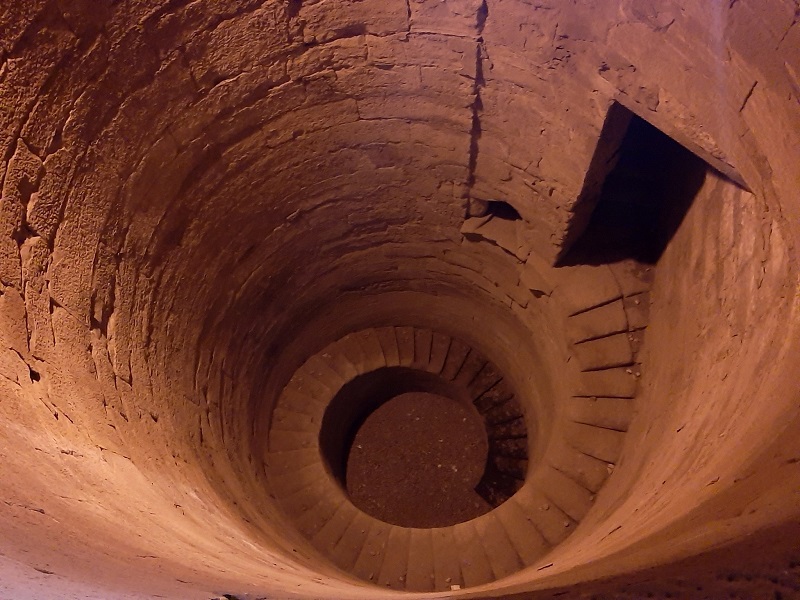
Some last impressions
After the informative tour, I had some free time to explore the temple complex at leisure.
This was much appreciated as besides needing some more time for photography I also really enjoyed having the extra time to absorb the unique surroundings in all quietness.

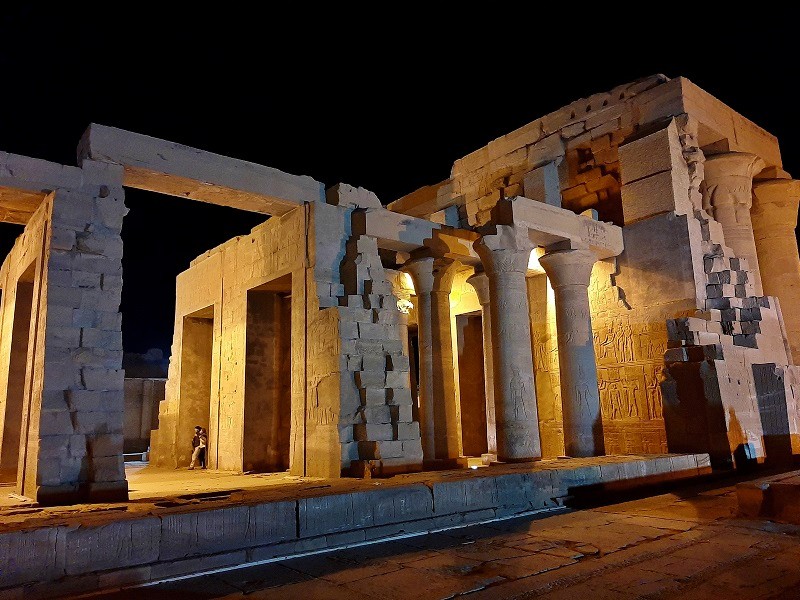

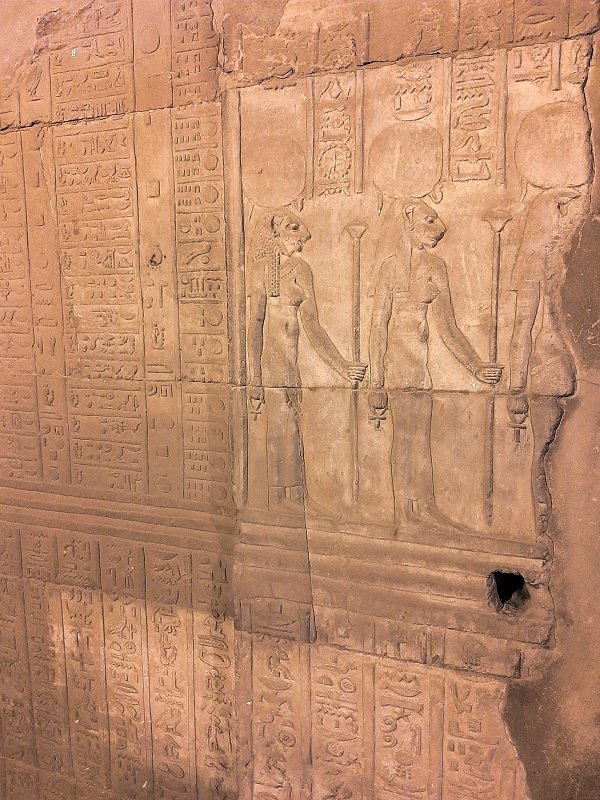


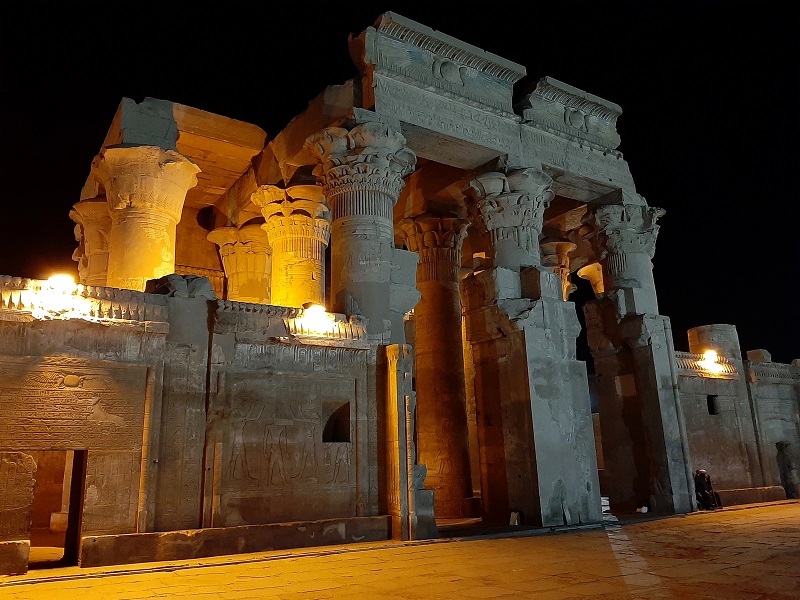
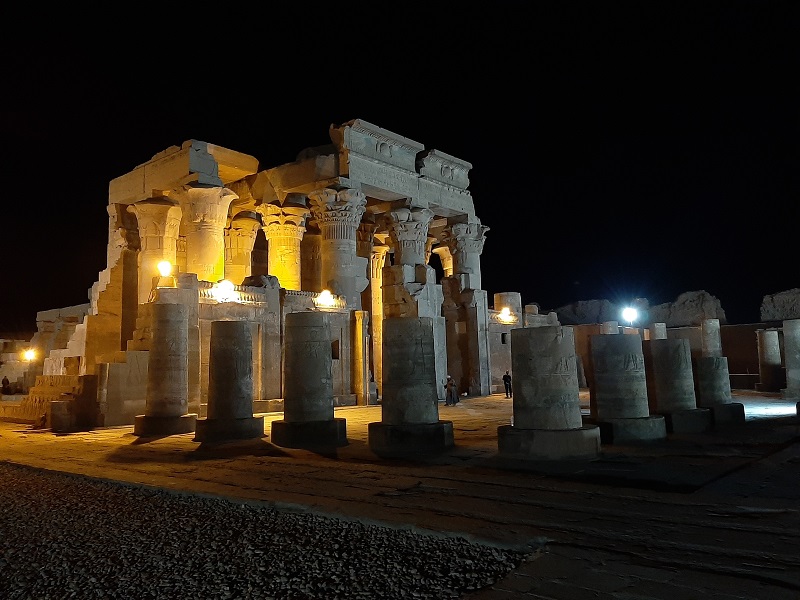
Crocodile museum
When you exit the temple of Kom Ombo, you will pass through a small crocodile museum showing a number of mummified crocodiles in all sorts and sizes.
Crocodiles used to be plentiful along the shores of the River Nile at Kom Ombo, so it isn’t entirely a surprise why they would venerate the crocodile god Sobek here.
However, since the construction of the Aswan Dam there aren’t any crocodiles in the Nile north of the dam, so if you want to spot them in the wild you have to go south to Lake Nasser or other countries along the Nile such as Sudan.
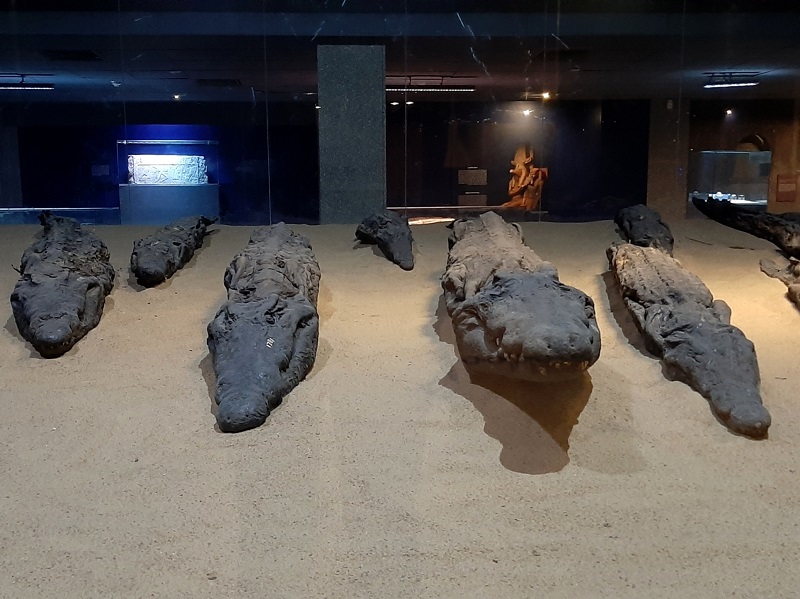
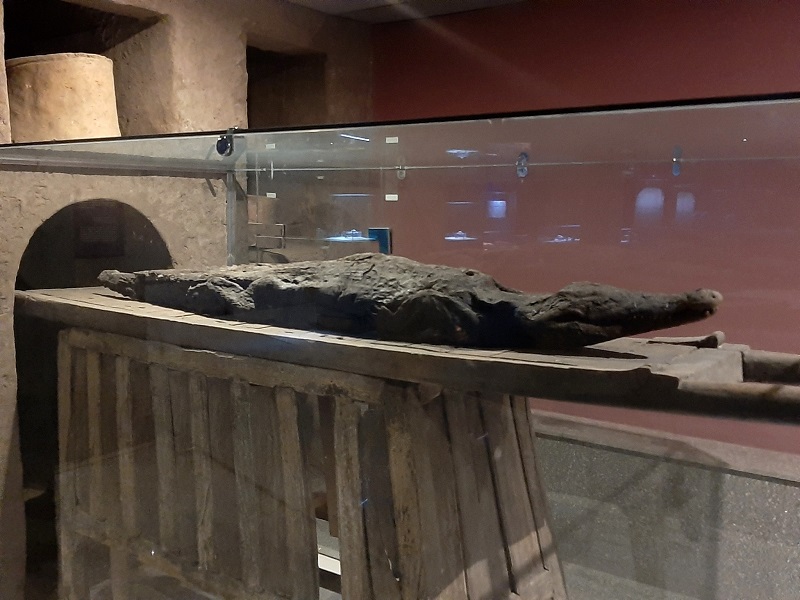
Back to the boat
Having completed my visit of the ancient Egyptian temple of Kom Ombo, it was time to return to my Nile river cruise ship M/S Princess Sarah.
After enjoying a delicious dinner it was time to go to bed early, as early in the next morning another Egyptian temple would be on the itinerary.


Conclusion
Kom Ombo was a fascinating stop on my Nile river cruise itinerary.
The temple of Kom Ombo – dedicated to the falcon god Horus and the crocodile god Sobek – was beautifully illuminated in the darkness and certainly a highly impressive sight to behold.
If you have a good quality guide with you, it’s a wonderful experience to discover the symbolism and meaning behind all the striking reliefs and functioning of the temple.
Whether you visit it in the evening like me or in the day, Kom Ombo is a must-see destination for anyone travelling between Aswan and Luxor.
Acknowledgements
This Kom Ombo article was written with the help and support of my Aswan-based guide Mohammed Badawy, who is a professional archaeologist.
If you need the services of a professional guide on your Egypt tour, I can highly recommend Mohammed as he is extremely courteous, hospitable and also a great source of knowledge about everything related to ancient Egypt.
Mohammed can be contacted by e-mail (mohammed_badawy95 *at* yahoo.com) or by phone or WhatsApp on the number +201005448691).
Trip report index
This article is part of the ‘Walk Like an Egyptian: A Grand Tour of Egypt‘ trip report, which consists of the following chapters:
1. Red-Eye Ramblings of a Late Night Flight to Cairo
2. A Visit to the Pyramids of Giza by Camel
3. Review: Sofitel Nile El Gezirah, Zamalek, Cairo
4. Exploring the Medieval Old Town and Islamic History of Cairo
5. Visiting the Museum of Egyptian Antiquities in Cairo
6. Mar Girgis: The Churches of Christian Old Cairo
7. Review: Ernst Watania Sleeping Train Cairo to Aswan
8. The Ancient Quarry of Aswan and the Unfinished Obelisk
9. A Boat Ride From Aswan to the Temple of Isis at Philae
10. A Visit to the Aswan High Dam and Lake Nasser
11. A Visit to the Nubian Village on Aswan’s Elephantine Island
12. Aswan Guide: A Visit to Egypt’s Most Stunningly Located City
13. A Half Day Trip From Aswan to Amazing Abu Simbel
14. Nile River Cruise Guide: All Info for Your Egypt Boat Trip
15. Review: M/S Princess Sarah Nile River Cruise Ship
16. Nile Cruise: Sailing From Aswan to Kom Ombo
17. A Visit to the Ancient Crocodile Temple of Kom Ombo (current chapter)
18. A Visit to the Temple of Horus at Edfu
19. Nile Cruise: Sailing From Edfu to Luxor
20. Luxor, Egypt: Visiting the Sights of Ancient Thebes
21. A Visit to Luxor’s Giant Temple Complex of Karnak
22. Visitor Guide to Wonderful Luxor Temple
23. Valley of the Kings: A Visit to Luxor’s Ancient Necropolis
24. The Temple of Hatshepsut: A Visit to a Unique Mortuary Temple
25. Review: Sofitel Winter Palace Hotel, Luxor, Egypt
26. Review: Daytime Train Luxor to Cairo, Egypt
27. Review: Steigenberger Hotel El Tahrir, Cairo
28. A Visit to the Pyramid of Djoser and the Saqqara Necropolis
29. A Visit to the Dahshur Pyramid Complex
30. Memphis: Exploring the Old Capital of Ancient Egypt
31. From Cairo to Alexandria by Train: My Travel Experience
32. Review: Paradise Inn Le Metropole Hotel, Alexandria, Egypt
33. Alexandria: A Visit to Egypt’s Historic Mediterranean Port City
34. Egypt: Impressions and Reflections After My Two Week Trip
35. Epilogue: Safety and How to Deal With Street Hassle in Egypt


Hello Koen,
I am looking to book a cruise through Luxor and Aswan Travel. The standard and deluxe level ships don’t appear to have private tours (which we are hoping to have for the reasons you mentioned). How were you able to arrange this?
Thank you.
Hi!
I reached out to Luxor and Aswan Travel by e-mail/WhatsApp in order to discuss itineraries/prices and to get some answers to the many questions I had about Nile river cruises. They were swift to reply/discuss options. As far as I recall, when I travelled (2020 – am a bit late writing these trip reports up!) the only option was a private tour as I was the only one on my ship who booked through Luxor & Aswan Travel. These ships typically have people on them who are booked through all kinds of different tour outfits (both Egyptian and foreign!) and included both smaller groups of just a couple of persons as well as larger tour groups (I was the only one with a private guide).
Bottom line, I’d just write to Luxor & Aswan Travel (or perhaps some other reliable agencies too) and just communicate your wishes! I’m sure that a private tour guide is still possible. They were very accommodating to me when it came to some requests I had, so I would be surprised if it cannot be arranged.
Thank you very much for the assistance!